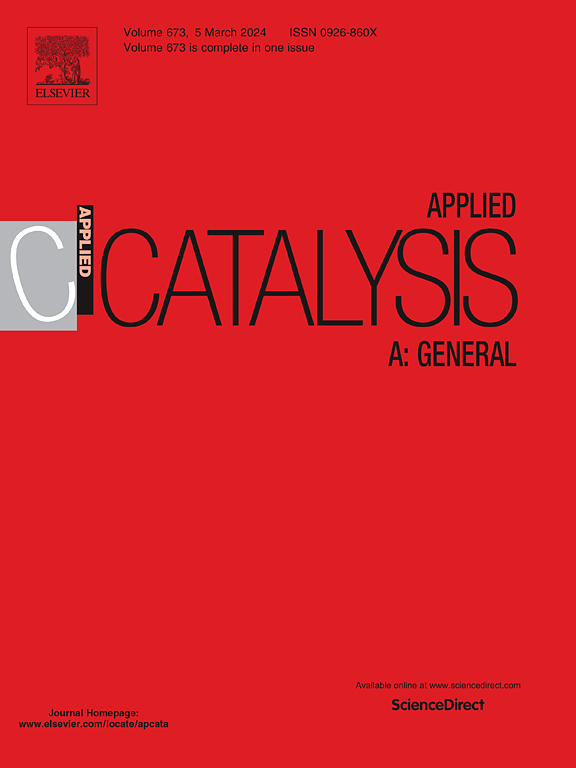镍钴双金属纳米颗粒催化铝乙醇原位制氢
IF 4.8
2区 化学
Q2 CHEMISTRY, PHYSICAL
引用次数: 0
摘要
以Al粉、乙醇、六水氯化镍、二水氯化铜和六水氯化铝为混合分散体,通过Al-乙醇反应,同时制备了氢和Al2O3负载的NiCu合金双金属纳米颗粒(NP)催化剂。Cu的加入改善了Ni的分散性,增强了抗氧化能力。Ni80Cu20 NPs具有优异的原位制氢性能,产氢率为97% %,生成速率为85 mL-H2-min−1-g- al−1,分别是Ni和Cu NPs的1.1倍和3.4倍。此外,通过对al -乙醇反应产物进行冷冻干燥合成的Al2O3负载Ni80Cu20 NPs催化剂的乙烯选择性比单金属样品高2倍和8倍。这种金属之间的协同作用改变了催化剂的几何和电子性质。此外,与钯基催化剂相比,Ni80Cu20/Al2O3催化剂对乙炔的半加氢表现出相当的乙烯选择性。本文章由计算机程序翻译,如有差异,请以英文原文为准。
Highly efficient in-situ hydrogen generation from Al-ethanol reaction using NiCu bimetallic nanoparticles as catalysts
Hydrogen and Al2O3 supported NiCu alloy bimetallic nanoparticle (NP) catalysts were simultaneously prepared through Al-ethanol reaction with a mixed dispersion of Al powders, ethanol, nickel chloride hexahydrate, copper chloride dihydrate and aluminum chloride hexahydrate. The addition of Cu improved the dispersion of Ni and enhanced antioxidation ability. The Ni80Cu20 NPs demonstrated an outstanding in-situ hydrogen production performance with a hydrogen yield of 97 % and a generation rate of 85 mL-H2-min−1-g-Al−1, which was 1.1 and 3.4 times compared to that of monometallic Ni and Cu NPs. Moreover, the ethylene selectivity of Al2O3 supported Ni80Cu20 NPs catalysts synthesized via subsequently freeze-drying the products from the Al-ethanol reaction, was 2 and 8 times higher than that of monometallic counterpart samples. This synergistic effect between the metals altered both the geometric and electronic properties of the catalyst. Furthermore, compared to Pd-based catalysts, the Ni80Cu20/Al2O3 catalyst exhibited comparable ethylene selectivity for the semi-hydrogenation of acetylene.
求助全文
通过发布文献求助,成功后即可免费获取论文全文。
去求助
来源期刊

Applied Catalysis A: General
化学-环境科学
CiteScore
9.00
自引率
5.50%
发文量
415
审稿时长
24 days
期刊介绍:
Applied Catalysis A: General publishes original papers on all aspects of catalysis of basic and practical interest to chemical scientists in both industrial and academic fields, with an emphasis onnew understanding of catalysts and catalytic reactions, new catalytic materials, new techniques, and new processes, especially those that have potential practical implications.
Papers that report results of a thorough study or optimization of systems or processes that are well understood, widely studied, or minor variations of known ones are discouraged. Authors should include statements in a separate section "Justification for Publication" of how the manuscript fits the scope of the journal in the cover letter to the editors. Submissions without such justification will be rejected without review.
 求助内容:
求助内容: 应助结果提醒方式:
应助结果提醒方式:


